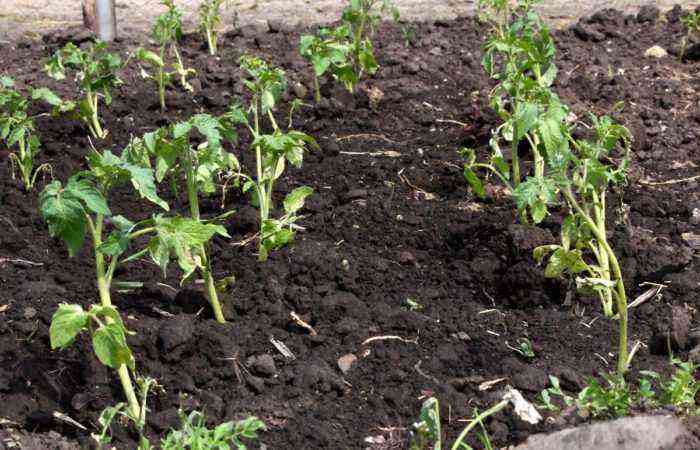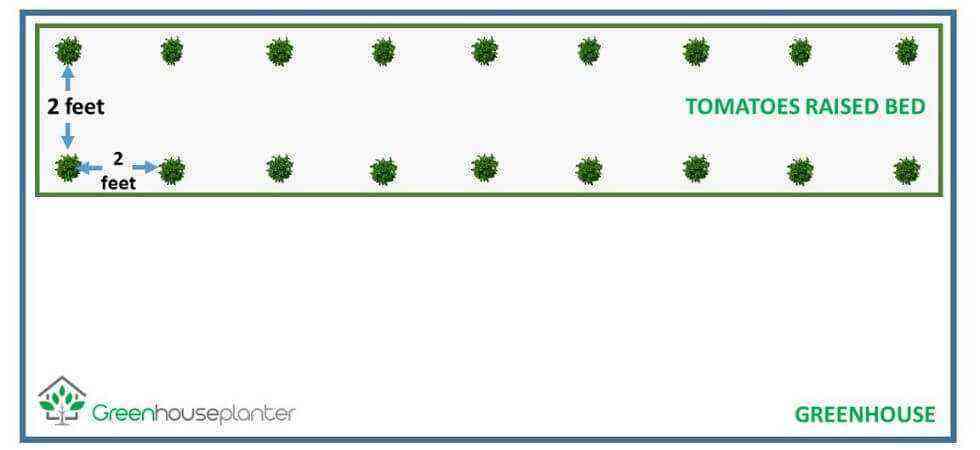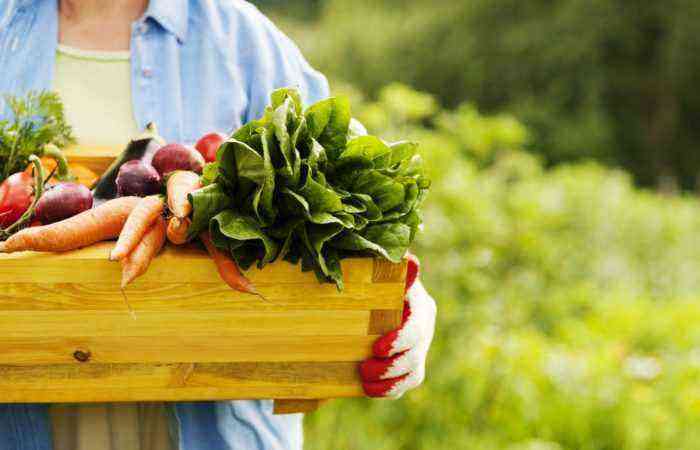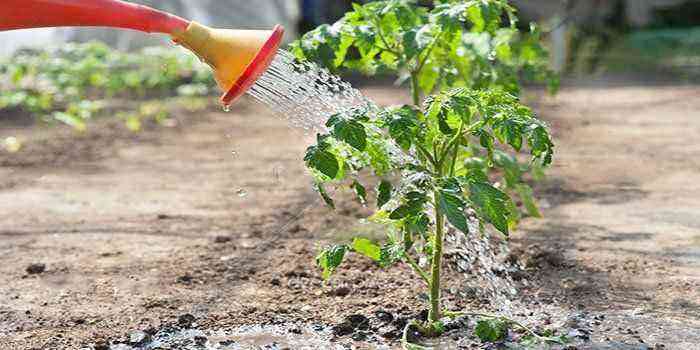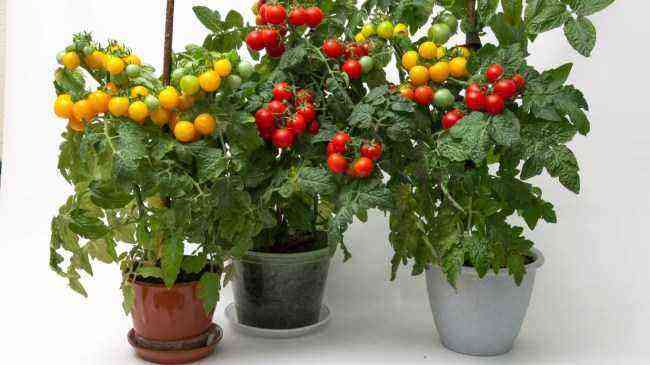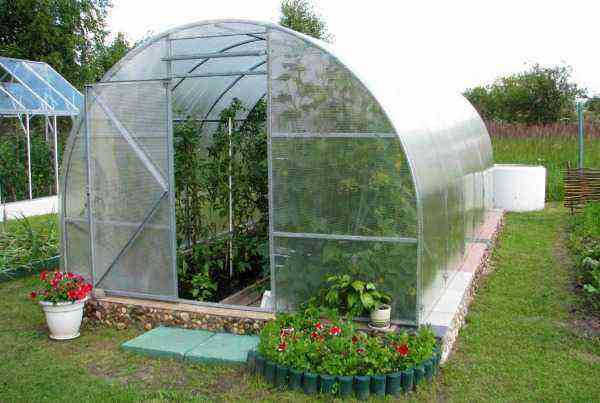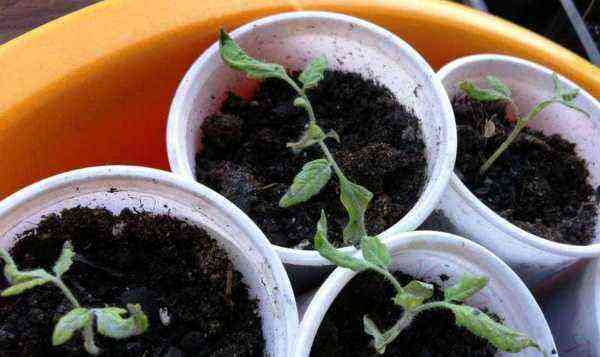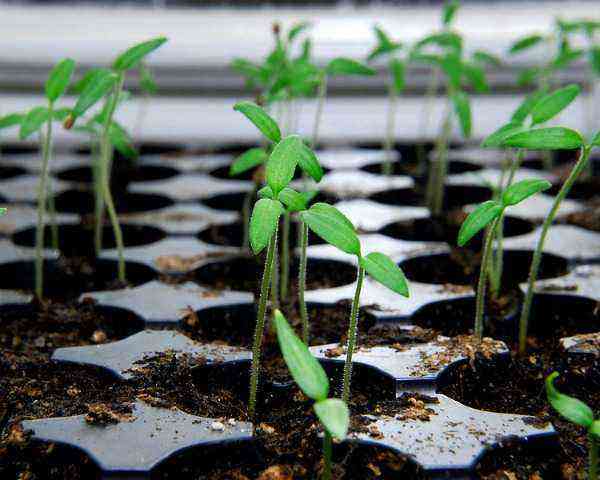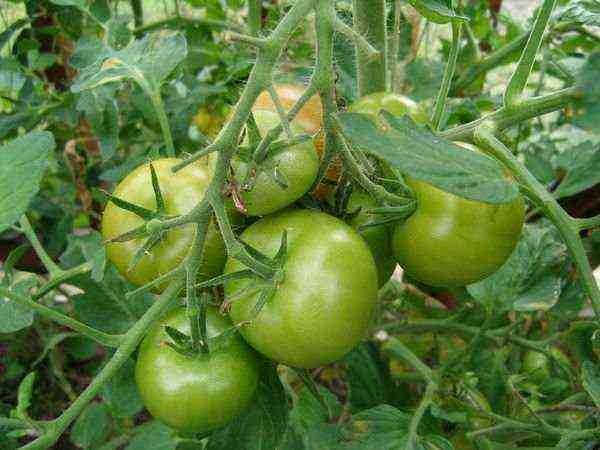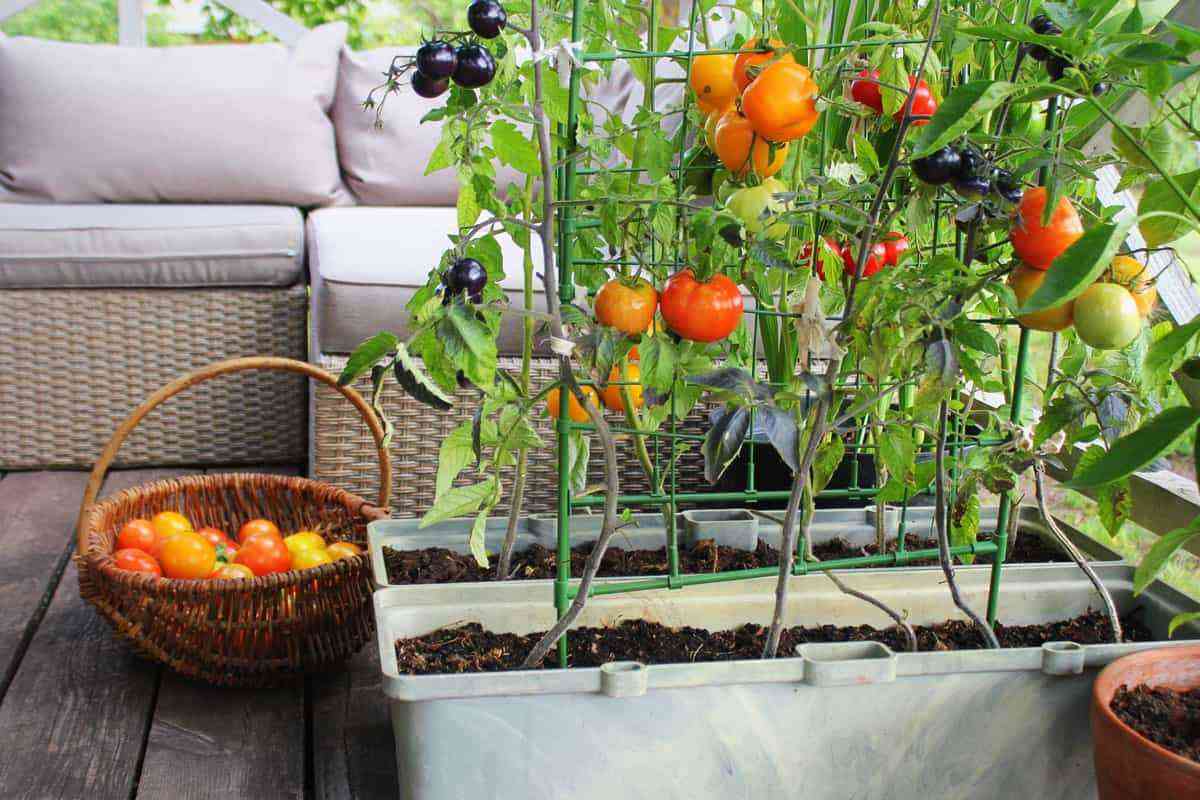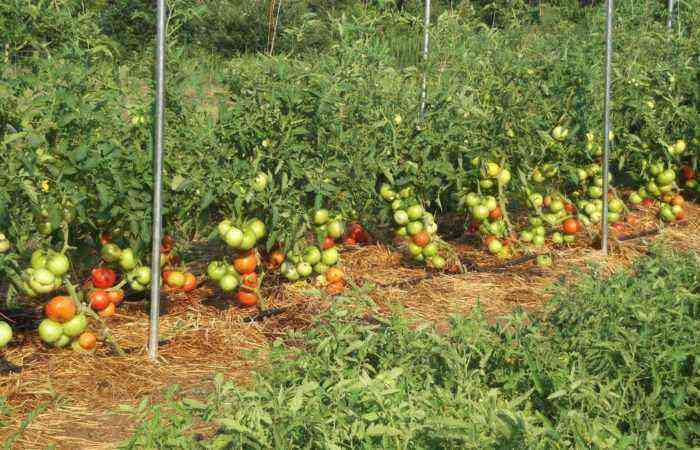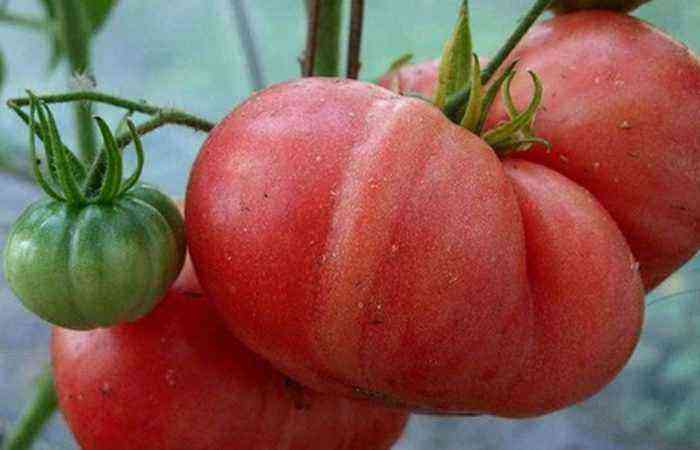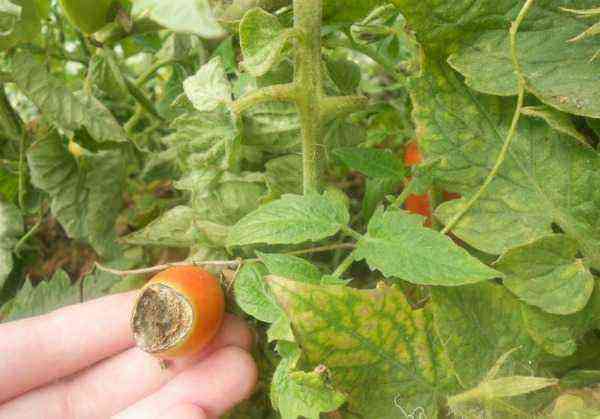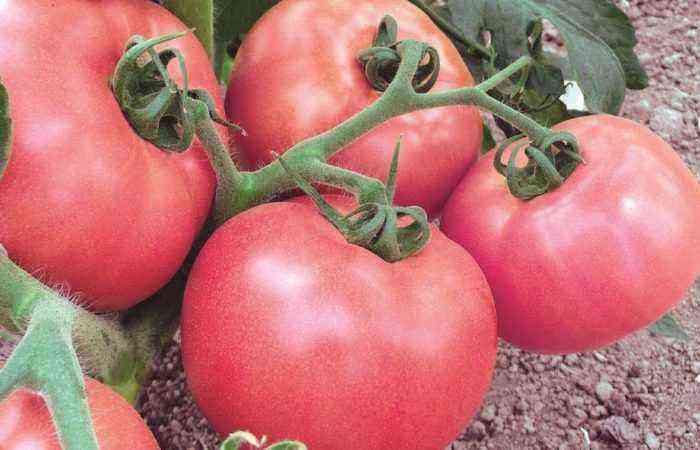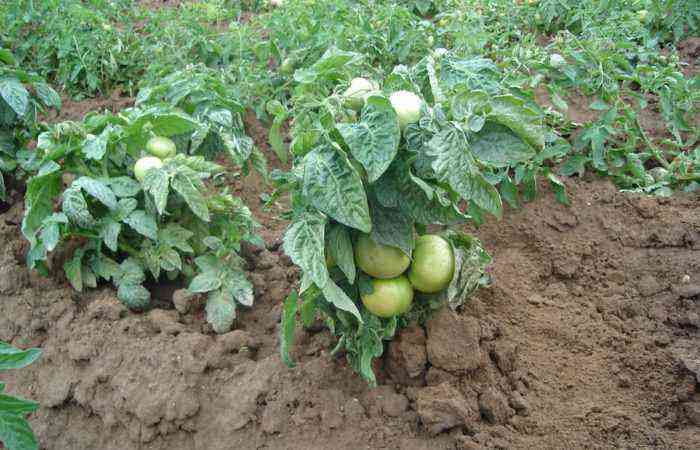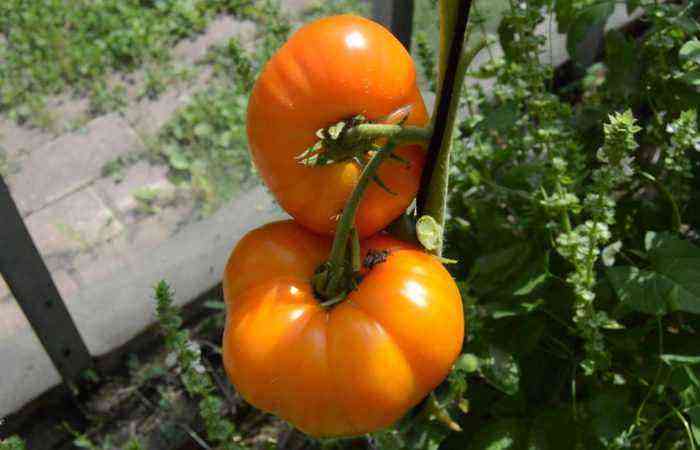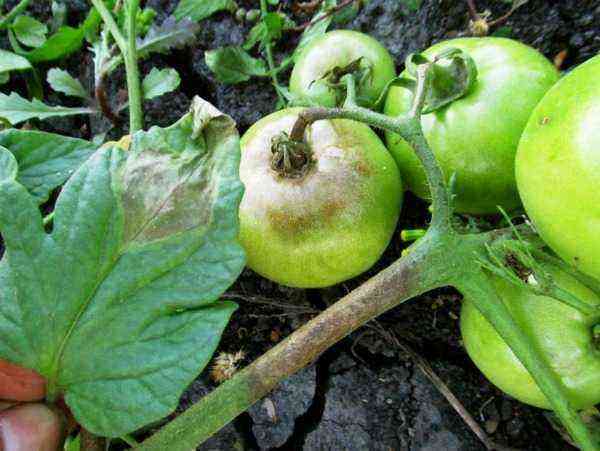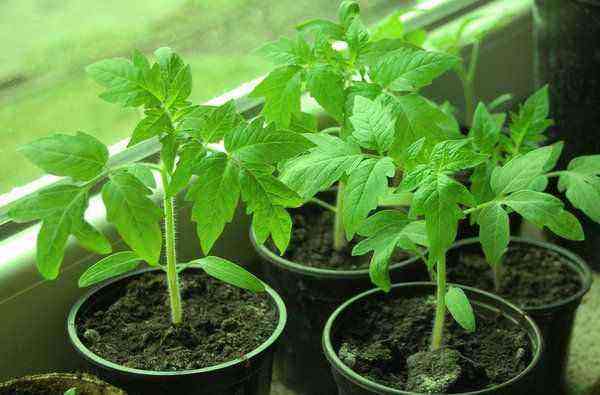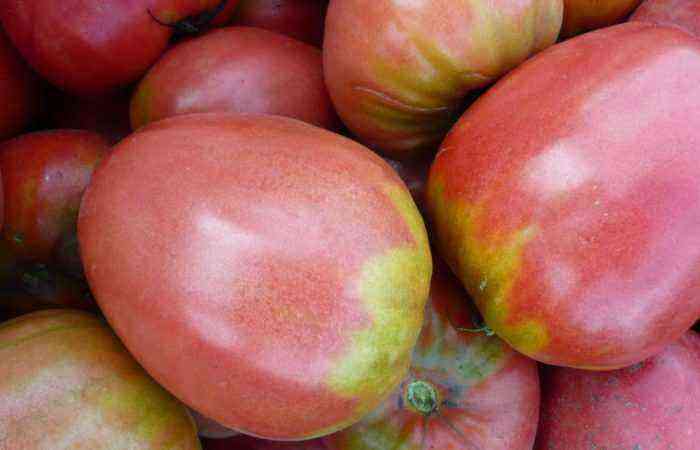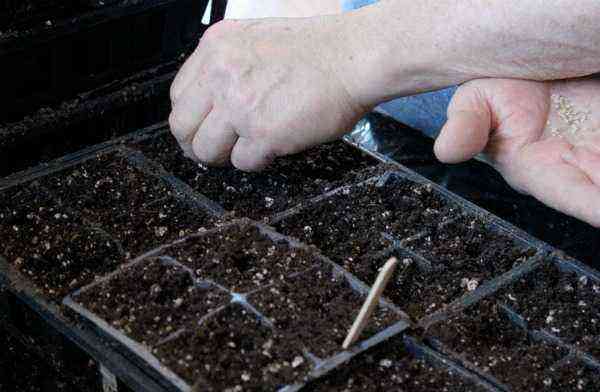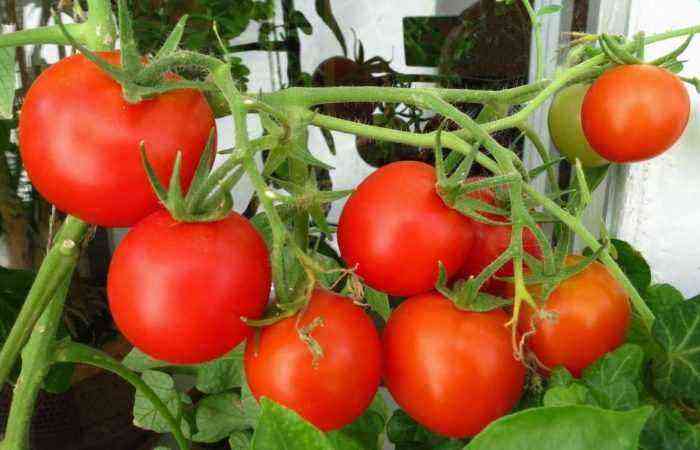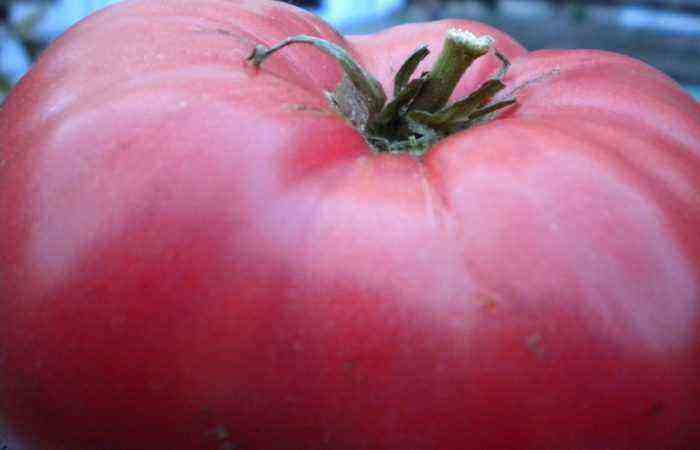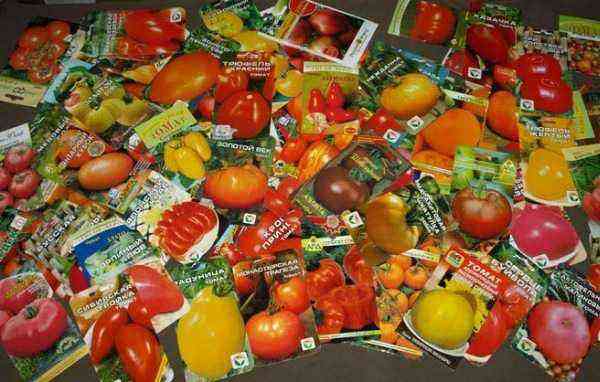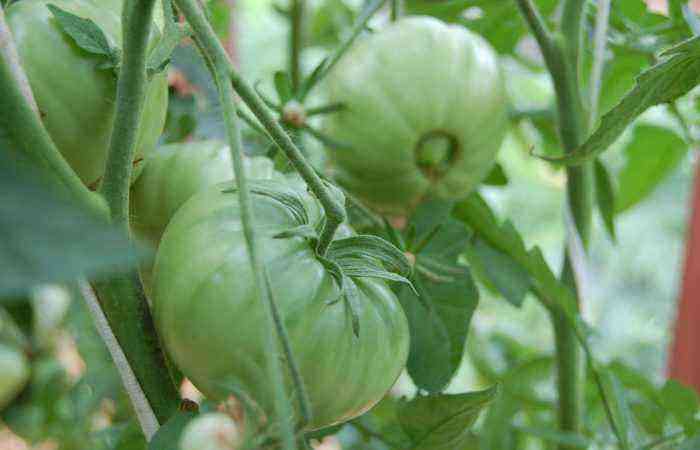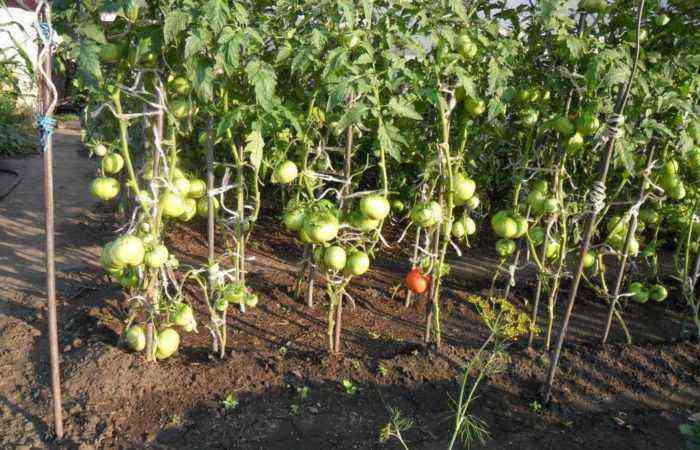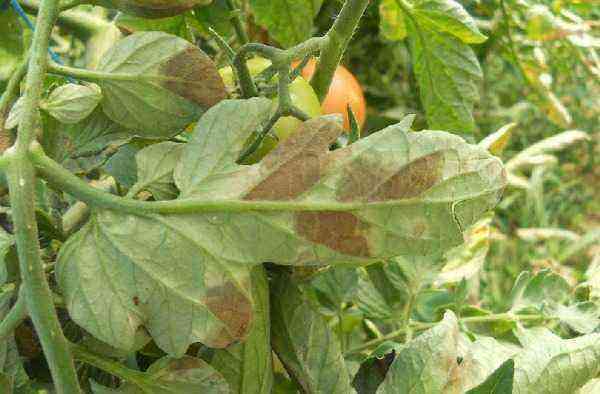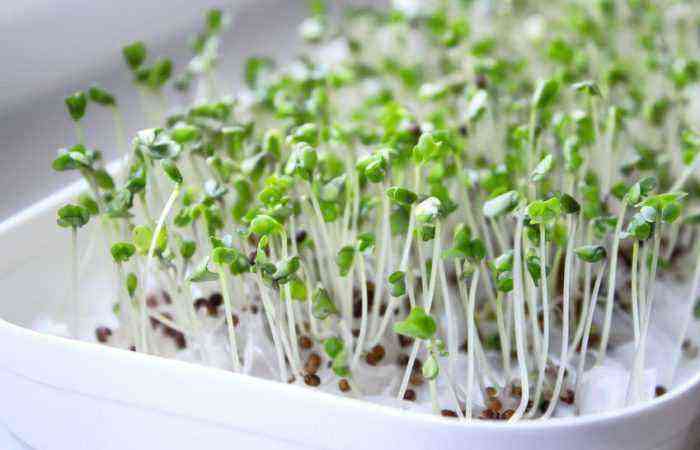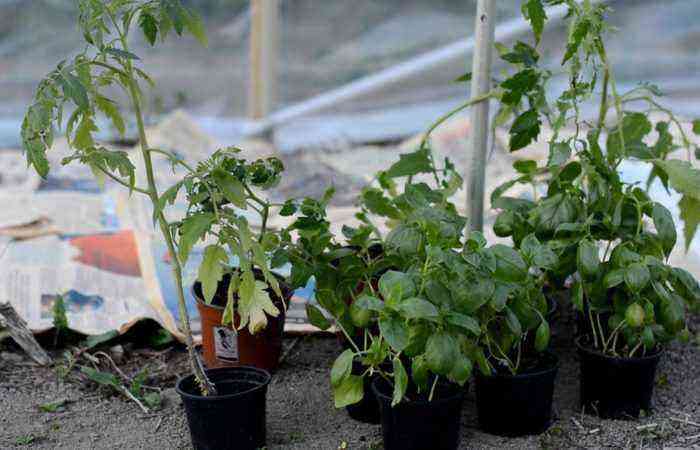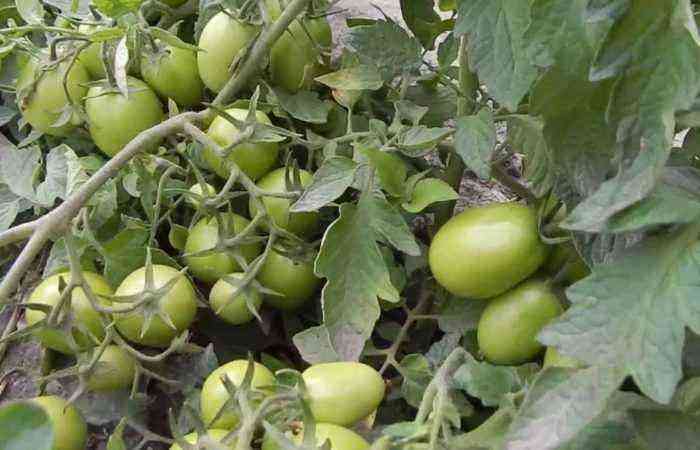Neither difficult weather conditions, nor the cost of physical effort stop gardeners from a great desire to grow a high-quality crop of juicy and fragrant tomatoes. In order not to waste effort in vain, you need to select varieties that are resistant to variable weather conditions and various diseases.
At the same time, the appearance of the plant and its fruits should be pleasing to the eye, the ripening time should be early, the fruiting should be long, and the taste of the fruit should bring pleasure. All these wishes are met by the proven, popular Verlioka tomato variety.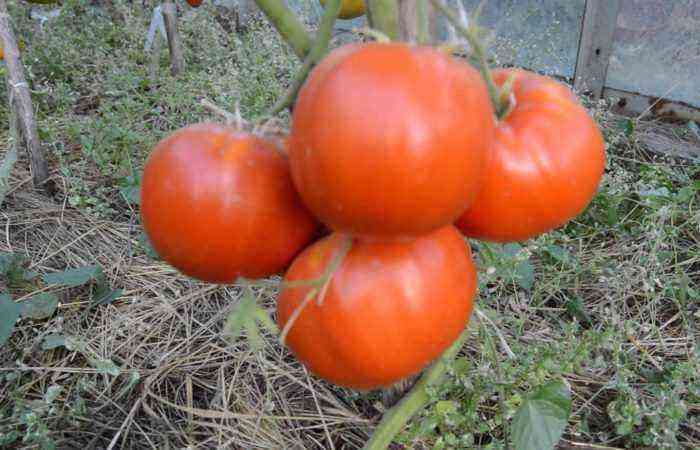
Characteristics and description of tomato “Verlioka”
Variety “Verlioka” belongs to the group of semi-indeterminate varieties. This means that the plant is quite tall, under favorable conditions the main stem reaches a height of 1,5-2,0 m. After that, its upward growth ends. The number of leaves according to the characteristics is moderate, they are large and have a rich green color.
An additional shoot is formed in the axil of each leaf. The first flower brush appears after 5-7 leaves. On the central shoot, from 4 to 8 fruit brushes are laid, each of which has from 6 to 10 ovaries.
Ripe fruit color
The appearance of the fruit is attractive, shiny, the color is bright red, the shape is round, without ribbing. The fruits are quite one-dimensional, have a good presentation and attract attention. In addition, the fruit has a thin, elastic, but resistant to damage and cracking skin. They are well stored, transported, can ripen in the removed form.
Ripening time
The variety has a short ripening period (90-105 days) and belongs to the early ripening group. Fruiting in open ground, depending on the region and weather conditions, lasts from July to September. In spring greenhouses, the fruits begin to ripen 2-3 weeks earlier, and finish at the end of September.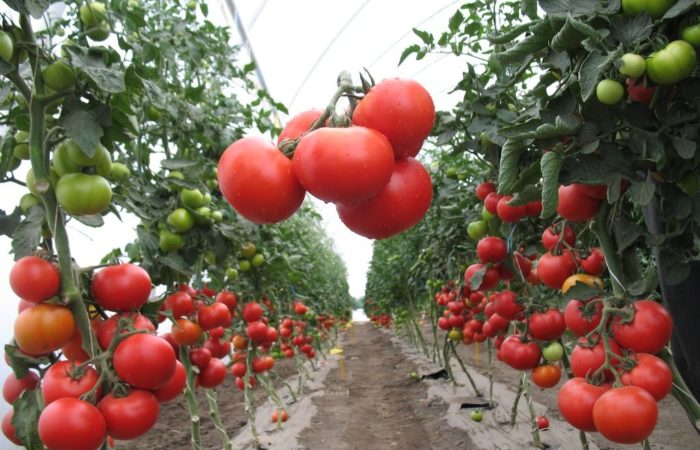
Palatability
varieties are highly valued. Fruit pulp is firm, not watery. The skin breaks easily. The number of seminal chambers is insignificant, they are not large, not hollow, they are not felt when used. The taste of the tomato is sweetish, with a pleasant tomato aroma.
Productivity
high grade. With proper agricultural technology, up to 20 kg of high-quality tomatoes are harvested from one square meter, or 4-6 kg from one bush. The fruits are not large, the average weight reaches 80-110 g.
Similar varieties
Tomato “Verlioka” is a hybrid, created by improving the varieties “Gisok-agro” and “Gavrish”. Based on it, a new improved variety “Verlioka plus F1” was put into production. This is a determinate variety, it is slightly shorter (up to 150 cm) and finishes fruiting earlier. The bush is more compact, less sprawling. According to the description, the fruits are larger than those of Verliok, weighing from 120 to 140 g and sweeter. The stalk has a slight ribbing.
Positive characteristics and disadvantages of the variety
Advantages inherent in the variety:
- taste and texture of fruits;
- high commercial quality and appearance;
- genetic resistance to major diseases;
- tolerant attitude to short-term deterioration of weather conditions.
There are no significant shortcomings in the variety. The requirements for soil fertility, mineral nutrition and agrotechnical care are the same as for other hybrids.
All costs of labor and funds of the plant pay off with a stable harvest.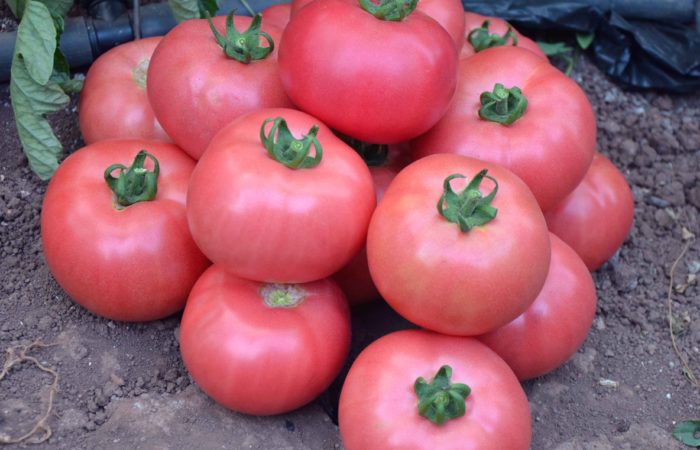
Optimal growing conditions
The grade is intended for cultivation in an open ground and protective constructions.
It is most effective to grow a variety in spring greenhouses, since its fruiting period is not long enough for heated winter greenhouses. It can be grown alone or as a compaction of tall varieties. In not very tall buildings, the variety is compacted with undersized tomatoes. Plants in the greenhouse must be provided with high-quality ventilation.
In some regions, not all fruits may have time to ripen and, sometimes, pinching of the top is required to limit the number of ovaries.
Agrotechnical events
Dive
Variety “Verlioka” is grown in seedlings, so the seeds are pre-sown:
- in late February – early March for film greenhouses;
- in late March – early April for open ground.
Seedlings are grown at a temperature of 22-25°C until germination, after germination they are reduced to 14-15°C. After 1-2 true leaves appear from the cotyledons, the seedlings dive into pots or plastic bags. At a temperature of 18-22°C, seedlings are grown up to the age of 45-50 days. By this time, the seedling has at least 3 pairs of true leaves and is ready for planting in a permanent place.
In film greenhouses, planting is carried out from the end of April, in open ground – from the end of May, depending on the region and weather conditions.
Optimal conditions for planting in open ground:
- stable air temperature not lower than 15°C, soil – 10°C at a depth of up to 25 cm;
- moderate soil moisture and loose structure;
- windless, cloudy, no rain weather.
Possible scheme for planting seedlings:
- In a greenhouse, it is best to plant two rows per bed with a distance of 35-40 cm between plants and 40-50 cm between rows. The passages between the ridges leave 60-70 cm, which facilitates the care, illumination of plants and their ventilation. When calculating the landing pattern, you need to remember: one row on the ridge is better than three.
- In open ground, various planting schemes are used: tape, square – nested, chess. The number of plants per 1 m2 should not be more than five.
Attention! The thickening of plantings worsens the care, ventilation of plants and contributes to the development of diseases.
planting plants
It is carried out in order to reduce side shoots, which contributes to increased fruit set on the remaining stems. Usually they leave one (below the first flower brush), less often – two shoots (the second – after the first brush). Thus, the bush will consist of two or three practically equivalent stems.
If all stepchildren are removed in the axils, the fruits will be tied on only one stem. Given that the stem is determinate and may stop growing after two or three fruit clusters, the shoot can be left below the last ovary. This will extend the growing season and get a crop from the side shoot.
Tying
Variety plants need a mandatory garter:
The stem is tied to a horizontal trellis. The node is made free so that as it grows, it does not injure the plant. Weekly, the stem is wrapped around the thread, so that it passes under each fruit cluster.
They are tied both to single stable supports and to trellises stretched parallel to the planted row. If the bush consists of several stems, it is advisable to tie up each of them.
The dressing material should not injure the stem and cuttings, so as not to create a risk of infection in the wounds.
Additional fertilizing
For good nutrition, the plant will need at least four top dressings during the growing season and full soil dressing in autumn and spring. The order of fertilizer application can be as follows:
Organic fertilizers – manure (5-8 kg), bird droppings (3-4 kg), ash (150-200 g), phosphorus-potassium fertilizers (20-50 g per 1 m2).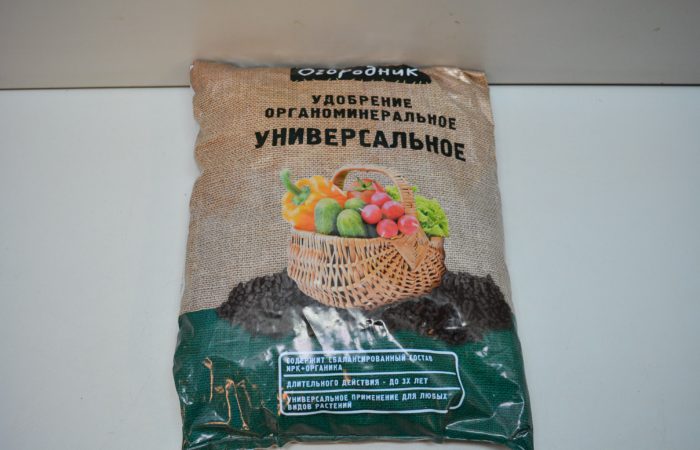
- Spring. Complex mineral fertilizers or nitrogen.
- During the growing season. The first two feedings should stimulate the growth of the plant. Mineral fertilizers are applied (nitrophoska – 50-60 g per 10 liters of water) or mullein infusion in a ratio of 1:10 with the addition of ash.
- Subsequent top dressing is aimed at stimulating the formation of ovaries and fruit ripening. At this stage, the proportion of potassium and phosphorus batteries increases.
- Top dressing is carried out by watering the solution under the root or spraying with small drops over the leaves. With foliar top dressing, a complex of fertilizers or individual microelements are introduced, the proportion of which is very small.
Foliar top dressing is carried out in cloudy weather to prevent leaf burn.
In rainy weather, foliar weather is ineffective due to rainwater washing away the fertilizer. They will be assimilated by the root system, but much later.
On the features of growing varieties of tomatoes Verlioka in greenhouse conditions, see the video.
Preventive measures against diseases and pests
Tomato variety “Verlioka” is resistant to many tomato diseases, such as:
- cladosporiosis;
- mosaic;
- spotting;
- blackleg;
- bacterial wilt and others.
Weakly affected by phytophthora.
Hybrid varieties have a genetically inherent resistance to major diseases, but without preventive measures it will be difficult for a plant to resist, especially in damp, cool periods:
- Compliance with crop rotation. It is not allowed to use as predecessors and neighbors: potatoes, eggplants, peppers, cabbage.
- Maintaining the optimum temperature and humidity in the greenhouse. Ensuring ventilation.
- Cleaning and destruction of excess, diseased leaves and plant debris.
- Preventive treatments with copper-containing preparations (copper sulfate, Bordeaux liquid, Oxyhom, Polycarbacin, etc.).
- Soil treatment before planting with a 1% solution of foundationazole or potassium permanganate.
- Periodic loosening of soil in open ground in order to improve water-air exchange.
The main directions of use of the variety
The fruits of the variety are intended for universal use:
Small, flat tomatoes are especially good for canning. They rationally occupy the volume of the bank. The look of canned tomatoes is very attractive and appetizing. The skin retains its integrity.
From ripe fruits, a lot of juice is obtained, containing a large amount of sugar and useful minerals. Used for diet food.
Suitable for other types of industrial processing: pastes, sauces, salads in their pure form, and in combination with other vegetables and fruits.
- Fresh can be used for a long period, as it is well stored, does not lose its nutritional properties.
Due to its physiological properties, the Verlioka tomato variety can compete with other determinant varieties and take its rightful place not only in the beds of amateur gardeners, but also be produced for commercial purposes.



